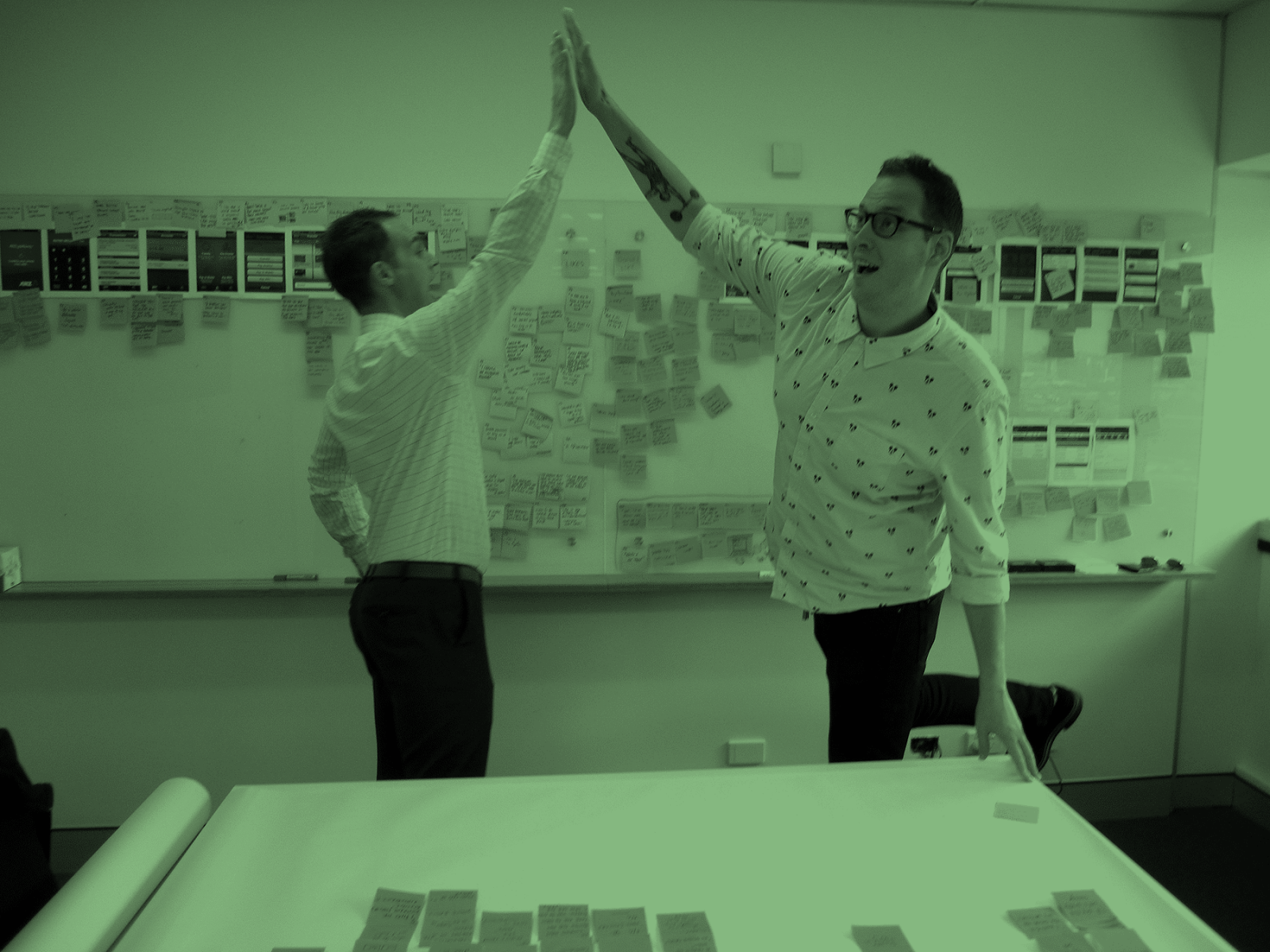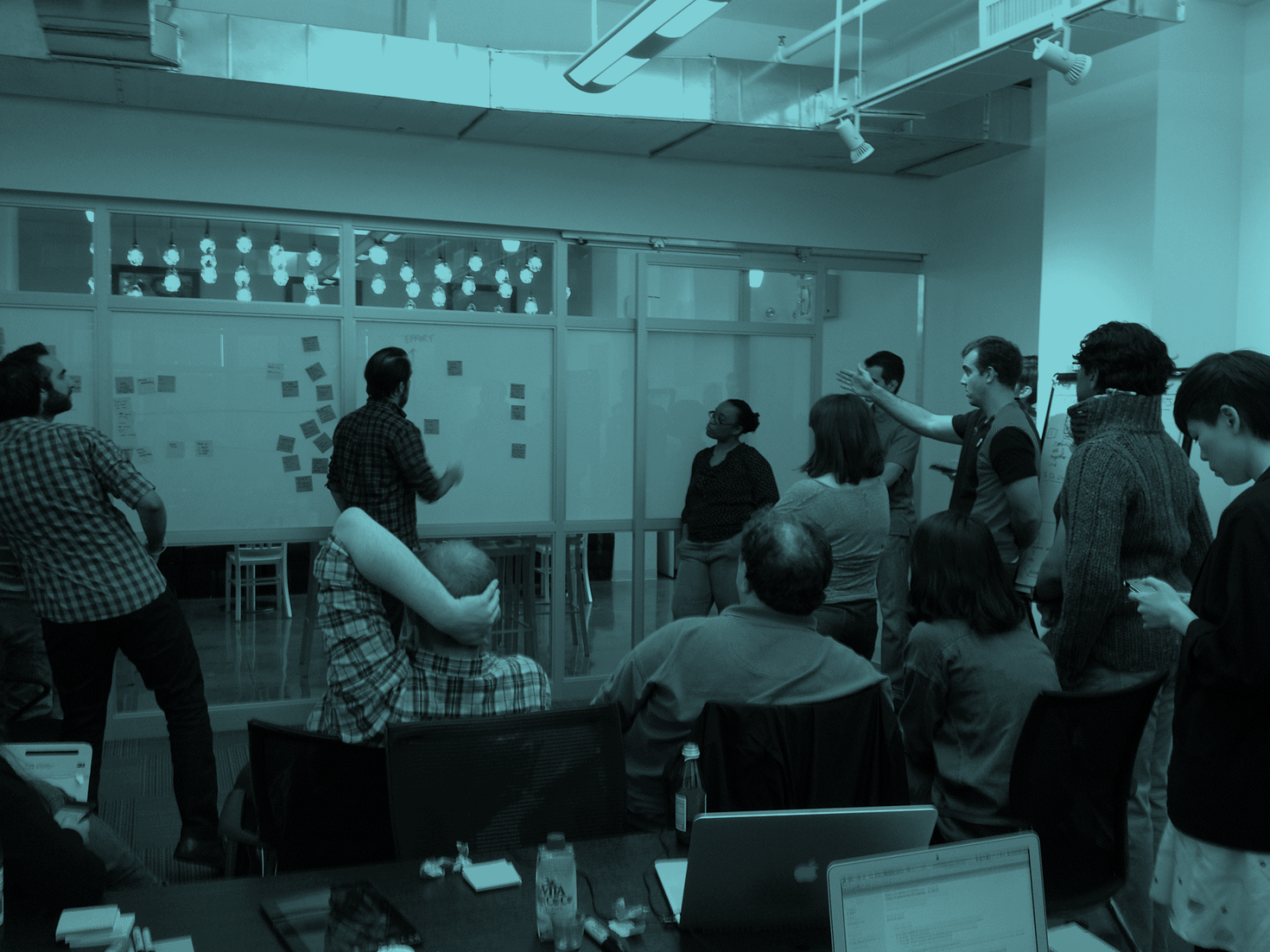
Business, Design and Technology: Joining Forces for a Truly Competitive Advantage
Technology is no longer an expensive monolith that needs to be overcome for businesses to succeed. In the emerging digital economy companies are learning new ways to leverage technology. They are reshaping their business models and the relationships they have with their customer. The list of industries being disrupted by digital technologies is growing. The recording industry, banks, retailers, telcos and taxis are just the beginning. Any industry yet to be disrupted need only wait until the digital native generation becomes the majority.
Any company that ignores the need to adapt risks going the way of Kodak. To embrace this new digital world, companies have to change their practices and the way they use technology. The traditional IT focus on systems and infrastructure is fast becoming an outdated approach. It’s no longer enough for companies to have a segregated IT department, hidden in a basement somewhere. Technologists need to do more than just provide services to other parts of the business. Technologists need to be part of the conversation before technology becomes the solution. Technology is becoming an enabler to try new ideas, rather than a handbrake slowing down progress. They can help explore business challenges and discover new ways to solve them. Companies that know how to do this are realising the benefits of living in the digital economy. This is the source of digital disruption – along with the solution to surviving it.
Close collaboration between business people and technologists produces a greater and more innovative result. Smart companies realise this. The rise of the Chief Digital Officer is a sign of the shift in mindset.
The key tool that enables digital innovation is Design Thinking. Design Thinking fuels a collaborative approach to problem exploration. It “uses the designer’s sensibility and methods to match people’s needs with what is technologically feasible and what a viable business strategy can convert into customer value and market opportunity."
For years Designers have been using their research skills to understand customer needs. Just as Developers are trained to code, Designers are trained to reframe and solve problem. This fuels alternative thinking, inspiring new creative solutions. These are the skills required to survive and thrive in the ever-changing digital landscape.
Where Designers often fall short is that they (just like Business people) often see Technologists as a blocker. Instead they should be seen as a collaborative partner to craft great solutions with.
Designers have long been guilty of removing themselves from the larger process. Choosing to hide away in colourful design agency offices with their headphones on. Only deeming Technologists worthy of seeing the solution as it sails over the metaphorical wall. And not until it is perfectly crafted with a ribbon wrapped around it.
To get a competitive advantage, breakdown this functional divide. To get ahead and stay there, Business people, Designers and Technologists have to join forces. Working closely together is the only way to unlock a company’s enterprise potential.
Being innovative in the digital space requires creating something that viable (Business), desirable (Design) and feasible (Technology).
So, how do you change the way a company works and embrace digital technology?

Multidisciplinary collaboration
Start-ups have it easy when it comes to multidisciplinary collaboration. When there are only a handful of people involved it forces everyone to work together. At the enterprise level bureaucracy gets in the way. This can be overcome. Start small. Focus on individual teams or projects. All it takes is a desire to share and learn from other disciplines and invite them into the conversation.
There are a few obvious ways to do this. Designers embedded in delivery teams are becoming commonplace. This is often driven by the need for UI design. It provides an opportunity for them to bring the voice of the customer and their feedback into the team on an ongoing basis.
Take technologists and business people out into the field for user research. It is perfect opportunity for everyone to learn about customers together. This means that everyone can become a customer advocate, not just the Designers. Where collaboration becomes harder is when exploring and defining business problems. It’s common for Designers and Business people to work together on problems. This is usually well before technology becomes a consideration.
Often budgets and resourcing become reasons not to bring technologists in to this space.
This is a missed opportunity. Technologists bring a different mindset. They can reshape the thinking about how technology can help. They can provide useful tools or head off paths that aren’t feasible. If nothing else, it's an opportunity to share the problem context. This creates a better understanding of the business goals once the project moves into the delivery phase.
Change your measurement metrics
Focus on providing value to the customers. Measure customer value, not individual activities.
Traditional organisational hierarchies are structured and segmented by skills-sets and functions. This model is a legacy of 19th century Fordism management theory It was designed for mass-production factories. In this structure managers focused on measuring and improving the performance of individuals. (Freedom From Command & Control, Pages 15-23, John Seddon).
This model breaks down for knowledge workers. When performance measurement focuses on individual activities, it focuses employees on internal targets. This encourages individuals to game the metrics and compete and against their co-workers. Instead they should be using their skills and creativity to deliver value to customers.

Multidisciplinary teams should focus on delivering value to customers, not internal hierarchies. Create teams that have a clear external purpose, along with the mix of skills required to achieve it. This breaks down barriers, creates efficiencies, and fuels collaboration.
Collocate teams and create physical space to collaborate
Sit teams working together in the same area. Remove the barriers in the physical space. Pull-down partitions. Use bench desks where people can sit directly next to each other. Provide more flexible spaces that teams can adjust to suit their needs. Open up more wall space where teams can post and visualise their work. Create information radiators that share ideas.
A collaborative team space can spark a change to the way teams work without the need for an organisation restructure. Collaboration comes naturally to people. Create a suitable physical space and it will organically happen.
This doesn’t just mean creating one big open plan office. A diversity of allows different types of working activities. Break out spaces a required for smaller two or three people discussions. Sometimes a quiet space is needed for focused thinking – or just to take a phone call. What is important is for teams to be able to easily communicate, with minimal barriers.

Become agile (with a small ‘a’)
Agile software development methodologies (such as Extreme Programming or Scrum) have revolutionised the industry. Once seen as a hippy alternative, Agile has gone mainstream and is now used by most large organisations. The ability to release software early and often has changed the game. It delivers business value regularly, rather than taking years to launch a product. Iterative software development puts the control back in the hands of the business owner. It is a big part of why technology has now become an enabler rather than a blocker.
The down side is that Agile methodologies have become industry buzzwords. People have become fixated on arguments about the practices and techniques. Don't worry about whether you do stand-ups or scrums. Focus on validating your ideas, shortening your feedback cycles and adjusting to new learnings. The true purpose behind being agile is being adaptable and responsive to change.
Taking lots of small bets
Think big, start small. The simple trick to being innovative is take lots of small, cheap chances. Don’t bet your house, car and boat all on black. When you have too much to lose you become trapped to one concept and fight for it well after it’s proved to be flawed.
We learn by doing. The only way to see if/how something works is to try it and see. Trial new ideas as inexpensively as possible. If you haven’t invested too much in it you can embrace the the learnings and move on.
The same principle applies to trying new internal practices or building new products. If the answer to a problem was obvious someone else would already be doing it. Being innovative and pushing the boundaries means pushing into the unknown.
There is a science to doing this. It’s starts by being willing to fail. Then learning how to fail-fast. The better you get, the shorter your feedback cycles. The quicker you learn if something works, the quicker you can cut your loses and try something else.
There are all kinds of lean learning tools out there. Guerrilla research, innovation labs, rapid prototyping. They all focus on learning as quickly and efficiently as possible.
Stop ignoring the divide between the Business, Designers and Technologists
As with any addiction, the first step is to admit you have a problem. Just because it’s always been done this way doesn’t mean it’s the right way.
The model of an IT department siloed off from other parts of the Business creates a permanent disconnect. It stifles collaboration. Just like the Business outsourcing all their creative thinking to an external Design Agency. This just formalises the divide.
Once you admit that this approach is flawed it allows the conversation and search for alternatives to start.
To be a winning team, we must all join forces - Business people, Designers and Developers. From this collaboration of complementary skills comes a truly competitive advantage. It allows us get on with the job of working together to delivering value to your customers.
The question is, do you need to stop denying that there is a divide?
This article is part of the InfoQ series “Design And Technology: Joining Forces For A Truly Competitive Advantage Content”.
Disclaimer: The statements and opinions expressed in this article are those of the author(s) and do not necessarily reflect the positions of Thoughtworks.














